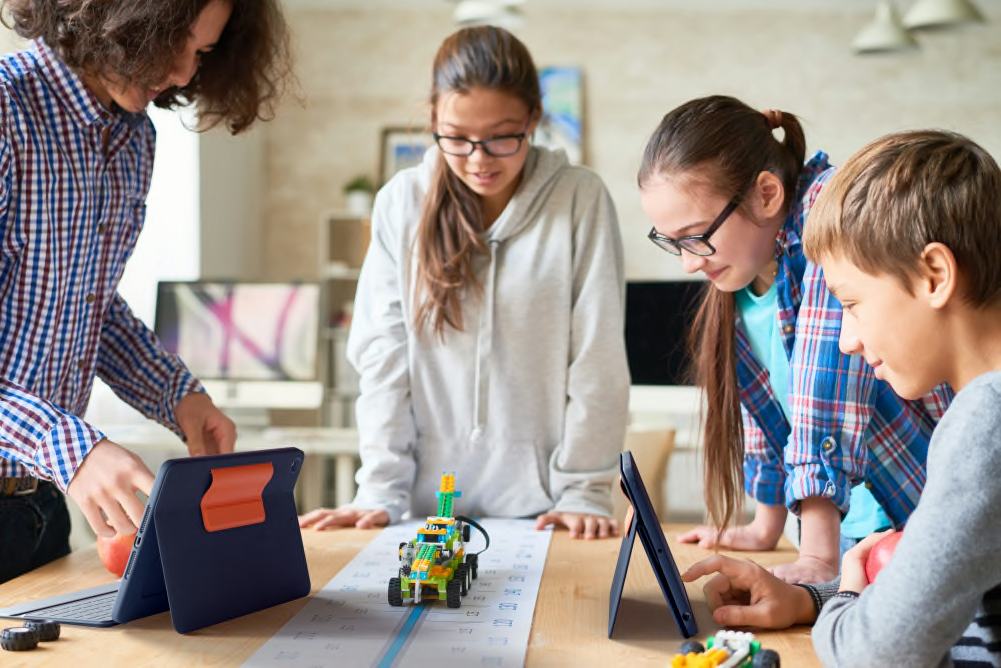Education Experts Share 5 Tips to Get Students to Focus for Longer

How can educators design environments that fit the flexibility of learning today while also maintaining students’ energy and ability to concentrate? During a webinar Madeleine Mortimore, Global Education Innovation Lead at Logitech, Alice Keeler, a teacher and edtech blogger, and Bedston Burrell, a Technical Operations Analyst, Audio Visual Services at Edina Public Schools discussed what educators can do to increase student focus and stamina.
Treat Comfort as a Non-Negotiable
Headsets help students focus and create distraction-free personal learning environments in noisy settings. But if the equipment keeps falling off students’ heads or is uncomfortable to wear, it will become just another classroom distraction. “When it comes to non-negotiables, I think that the comfort piece is really, really big for me,” said Burrell. Headsets like Logitech Zone Learn help students stay in the learning zone with adjustable slider arms, customizable ear pads to fit over-the-ear or on-the-ear, and a comfort band that prevents slipping.
Mix it Up with Dynamic Seating
The more students can move around the more likely they are to be physically comfortable and learn. Dynamic seating encourages movement. Educators can create sections in classrooms for different types of learning. Instead of only using traditional desks, there can be areas with soft cushions and beanbags, as well as designated areas for reading, quiet thinking, technology, and collaboration. By moving around students are also often able to see each other as well as teachers, avoiding interruptions by visual barriers.
Give Students Time to Stand and Stretch
During the school day, students often sit for long periods of time, which can lead to distraction. Taking intentional breaks can refresh learners’ focus. Those pauses can even be built into projects. Educators can ask students to get materials from another classroom or the library as a way for them to walk around. Similarly, educators can build breaks into transition points, such as between lessons or classes to give students the chance to stand and stretch.
Lift Teacher Voices with Microphones
Students and teachers deserve to hear and be heard. But, educators have to compete with classroom noise pollution caused by sounds inside and outside of the classroom. During a survey, 75% of teachers told Logitech and Education Week that teaching made their voices hoarse or strained.Logitech and Education Week Survey (August 2022) A microphone, like the Yeti Nano microphone with its broadcast sound quality and easy setup, can lift teachers’ voices to all students. “The only technology that's really proven to impact student learning straight off the bat is the microphone,” said Keeler.
Collaborate with Students When Choosing Technology
When students are excited to use a tool, they will naturally be more focused. To get them interested, educators can involve students in the technology decision-making process. This can mean having a set of pre-selected tools students can choose from when starting a new project or letting educators and students share feedback with technology departments or technology decision-makers.
By adopting some or all of these tips, educators can effectively manage physical discomfort, classroom noise pollution, and visual barriers. The result will be more student-centered learning environments that work no matter where, when, or how learning is happening.
Ready for more tips? Watch the full webinar.
Let’s Talk
Learn more about how Logitech Video Classroom Solutions can help educators and students.
Contact Sales
THANK YOU FOR CONTACTING US
A product expert will reach out to you shortly.